GUIDE
Our little guide is a set of tips,
information, suggestions and small details.
They will be very useful and will help you prepare your trip
in a complete and exhaustive manner.
AT LIMA AIRPORT
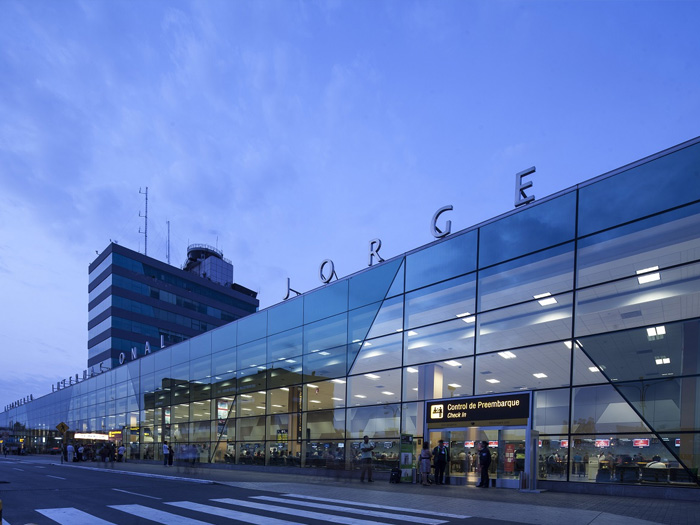 As soon as you disembark from the plane you will arrive at the migration area where passport control will take place, after which you will arrive at the area of the luggage delivery belts.
As soon as you disembark from the plane you will arrive at the migration area where passport control will take place, after which you will arrive at the area of the luggage delivery belts.
Once the suitcase has been retrieved, the last step is the passage from the customs area, here you will deliver the form that you have received and filled in by plane and then you will exit the passenger area.
Waiting for you among the many people with various signs will be the taxi driver with a sign "Casa Yolanda".
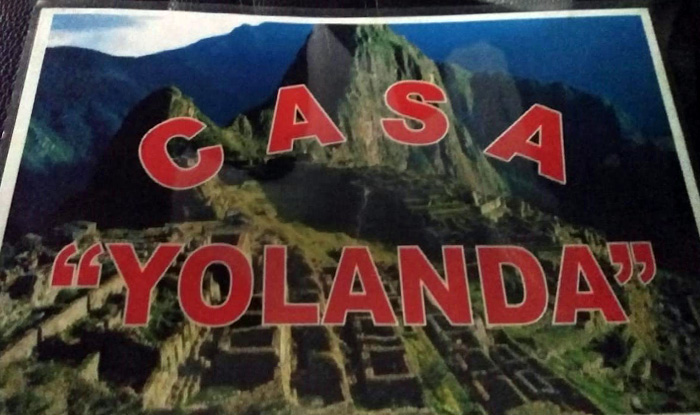 Note: it is important to look for the sign with the word CASA YOLANDA, not to be confused with type names: Sra Yolanda or similar which could be the names of travelers expected by other operators.
Note: it is important to look for the sign with the word CASA YOLANDA, not to be confused with type names: Sra Yolanda or similar which could be the names of travelers expected by other operators.
If for some reason you delay the exit from the airport (suitcases delayed etc.) try to warn Yolanda so that she notifies the driver who is waiting for you, or a person can look out the passenger exit door to look for the driver and advise him (ask the vigilante to look out).
For delay it is calculated from after 1 hour and 30/40 minutes that you have left the plane.
For any need, you can communicate with Yolanda on the following tel numbers:
- +51-1-3461272 home
- +51-997603953 mobile number
- which you can add to WhatsApp to communicate with you during your stay in Peru.
Inside the Lima airport you will have the possibility to connect to the WiFi Internet for 60 minutes.
After 60 minutes, you can purchase hourly sections with a credit card.
With regard to baggage it is advisable to have at least the change for 2 days in hand luggage.
If there were to be no delivery of one or more suitcases (we hope not) to the complaints office given as a reference and authorized Casa yolanda to act as intermediary.
Luggage usually arrives at the first available airport (Arequipa, Juliaca or Cusco based on the layout of your itinerary).
CURRENCY
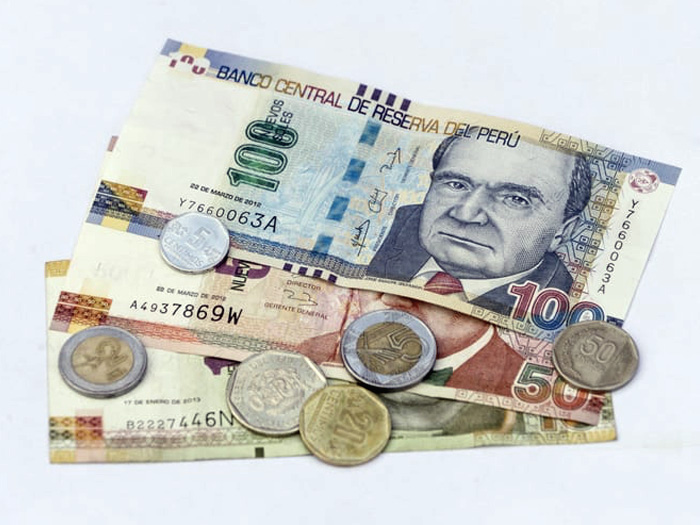 The currency used in Peru is the Nuevo Sol (S /.), The US dollar is also used although for convenience, the local currency is better for small expenses. Changing euros or dollars in local currency is very easy as there are numerous exchange boxes in all the tourist streets of Peruvian cities.
The currency used in Peru is the Nuevo Sol (S /.), The US dollar is also used although for convenience, the local currency is better for small expenses. Changing euros or dollars in local currency is very easy as there are numerous exchange boxes in all the tourist streets of Peruvian cities.
The currency exchange in the bank is not favorable, as it is not in the airport.
Credit cards are accepted in almost all stores: Warning !! If you use credit cards in restaurants the commission is quite high and is around 8/9% Visa, Diners, MasterCard and American Express, Maestro are the most accepted.
With the cards you can withdraw from the various ATMs (Cajeros) also with the prepaid type Postepay, both Dollars and local currency. For purchases in craft stores, we recommend using cash.
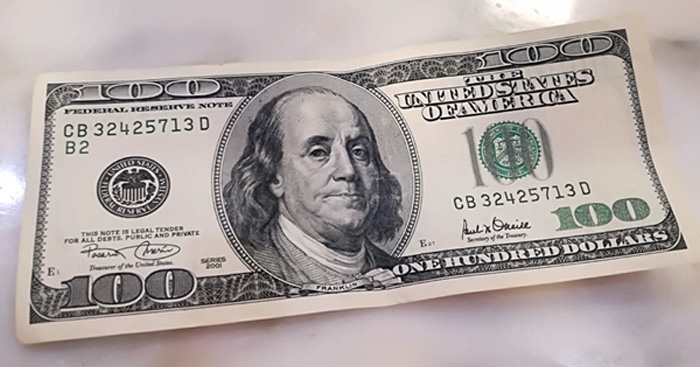 When you change the dollars in Italy, make sure that the banknotes are in good condition, that is: not broken, draw, or torn, because in Peru no one accepts them, or rather only accepts the bank de la Nacion or the money-changers changing them for less. Check that there are no 100 banknotes with the following series CB-B2 Series, although valid in other countries in the Peruvian territory it is considered out of issue (only the CB-B2 series as shown in the photo).
When you change the dollars in Italy, make sure that the banknotes are in good condition, that is: not broken, draw, or torn, because in Peru no one accepts them, or rather only accepts the bank de la Nacion or the money-changers changing them for less. Check that there are no 100 banknotes with the following series CB-B2 Series, although valid in other countries in the Peruvian territory it is considered out of issue (only the CB-B2 series as shown in the photo).
INSURANCE
Being a challenging journey, we strongly recommend that you take out a good insurance policy before traveling to Peru to protect you in the event of theft, repatriation, loss of valuables, delays in international flights. We recommend that you read the insurance policy well.
ELECTRIC CURRENT and ELECTRICAL OUTLETS
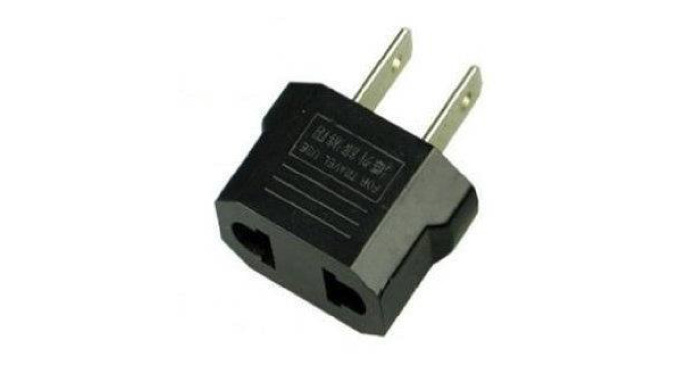 The electric current is 220 V, 60 Hz. Make sure that your charging devices show these values, otherwise you will need to have a transformer.
The electric current is 220 V, 60 Hz. Make sure that your charging devices show these values, otherwise you will need to have a transformer.
In some hotels the sockets are compatible with our bipolar plugs, where they are not compatible, an adapter for American-style flat plugs is required.
In US you can find it easily in hypermarkets.
TIPPING
Tips are not mandatory and are never included the amount of tips is variable and will depend on the degree of satisfaction with the service offered.
10% of the bill is adequate, it is still a tangible way to say thanks to drivers and guides.
WHAT TO BRING DURING A CLASSIC TOUR
For a classic tour by bus, train, boat and plane without excursion activities such as trekking (inka trail, Lares etc), we advise you to bring a suitcase with wheels not very bulky and a backpack for the day and to use for the excursion to Machu Picchu (on the train a hand luggage of maximum 5 kilograms is allowed).
Products for personal use such as toothpaste, dental paste, batteries for the camera can also be purchased in Peru.
During the PLANGED excursions in the PLAN even those of several days you can safely leave your luggage in storage at the hostales / hotels where you will be staying before the departure of the tour, and prepare only the equipment for the period of the excursion with a backpack (even for a visit to Machu Picchu large baggage must be left in your Cusco hotel which will keep it until your return to the hotel).
CLOTHING
Vi consigliamo di vestire a strati: t-shirt di cotone a maniche corte e lunghe, felpa oppure maglioncino o giacchetta con zip che si possono mettere o togliere in qualsiasi momento. Vi raccomandiamo di portare una buona giacca a vento e un poncho se viaggiate nelle Ande durante il periodo delle piogge.
In inverno (giugno-agosto): per la costa e Lima, vestiti di mezza stagione, una felpa o maglione e una giacca.
Per l'Amazzonia, vestiti leggeri, in fibra naturale, magari a maniche lunghe per difendersi dalle zanzare; una felpa per la sera; una felpa o una giacca per la sera nella parte più meridionale (v. Puerto Maldonado) e anche per la parte collinare dell'Amazzonia.
Per le Ande, in località sui 2.500/4.000 metri, come Cusco, Arequipa e il Lago Titicaca, vestiti di mezza stagione per il giorno, ma anche maglioncino, giacca a vento pesante e berretto per la sera; cappello per il sole, crema solare, scarpe comode per le visite in città e con suola aderente ai terreni scivolosi per la visita di Machu Picchu e ovviamente da trekking se avete programmato l’Inka Trail o altri Treck.
In estate (dicembre-febbraio): per la costa e Lima, vestiti leggeri, una felpa per la sera, ombrello o impermeabile leggero a nord di Lima per gli anni del Niño, una giacca leggera per la parte più meridionale della costa.
Per l'Amazzonia, vestiti leggeri, in fibra naturale, magari a maniche lunghe per difendersi dalle zanzare; una felpa o una giacca leggera per la sera per la parte collinare dell'Amazzonia.
Per le Ande, in località sui 2.500/4.000 metri, come Cusco, Arequipa e il Lago Titicaca, vestiti di mezza stagione o anche leggeri per il giorno, ma anche maglione, giacca a vento e berretto per la sera; cappello per il sole, crema solare, impermeabile Kway, scarpe comode per le visite in città e con suola aderente ai terreni scivolosi per la visita di Machu Picchu e ovviamente da trekking se avete programmato l’Inka Trail o altri Treck.
ALTITUDE
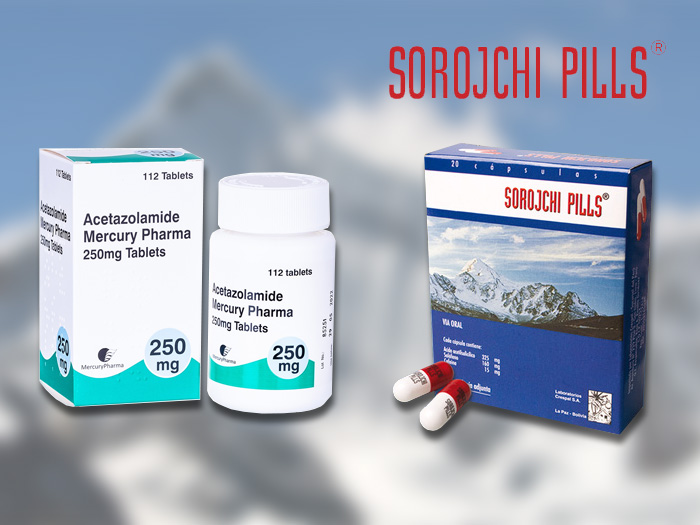 During your trip to Peru you will visit tourist resorts located at an altitude of over 2,500 meters, which is why you will need to take the right precautions to avoid altitude sickness.
During your trip to Peru you will visit tourist resorts located at an altitude of over 2,500 meters, which is why you will need to take the right precautions to avoid altitude sickness.
The problems related to altitude sickness can also occur in people in perfect physical condition. In most cases the ascent to high altitudes is accompanied by a slight headache. In more serious cases it presents itself with vomiting, dizziness, loss of appetite, insomnia.
What to do to prevent unpleasant surprises? The most effective remedy is to climb to high altitudes gradually.
For this reason, the most suitable route to visit the Andes and Machu Picchu is the route that goes from Nazca to Arequipa (2,400 meters), stopping for two days in the White City and then heading towards the Andes at altitudes above 3,000 meters.
As soon as you get to the top you should do everything slowly, avoid alcoholic beverages, use tobacco and sleeping pills. The inhabitants of the Andes recommend the traditional method of mate de coca.
Basically a tea made from coca leaves, legal in Peru. Drinking lots of water is essential. As for the diet, it is advisable not to overdo and eat carbohydrates such as bread dough potatoes (easier to digest).
From the medical point of view, we recommend the purchase and use of Acetazolamide. In Peru known as SOROCHE PILL It is recommended to take one or two tablets (125 gr or 250 gr) 24 hours before arriving at altitude, and then continue for another 48 hours once you arrive at your destination.
Side effects are increased urinary activity, nausea, tingling.
The administration of Acetazolamide to pregnant women is prohibited.
MEDICAL INFORMATION FOR TRAVELING IN PERU
Vaccinations
No vaccine is required to travel to Peru. If you visit the southern part of the Peruvian Amazon (Manu National Park, Puerto Maldonado) our advice is not to take any medication.
In fact, the night temperatures in this area of the Amazon are low and make the contraction of malaria unlikely (this area of the Amazon basin is officially an area free from malaria).
Furthermore it is good to know that the risk of malaria exists ONLY in the rarely visited inland areas.
Bringing medicines
The list of drugs to be brought here is not exhaustive; is the essential part of the medical kit to carry during your trip to Peru.
- Antibacterial
- Acetazolamide of 125 or 250 gr - to be taken one day before arriving at altitude and for two or three days depending on the persistence of symptoms
- Anti-diarrhea drugs
- Anti-inflammatory
- Antihistamines
- General antibiotic
- Insect repellent
- Sun protection
- Thermometer
CLIMATE IN PERU
Climate in Peru is divided into three main climatic areas: arid desert along the coast, the Andes mountain range and the extension of the Altopiano region, and finally the wetland of the Amazon basin.
Lima has a mild climate, with no abundant rainfall in winter or excessive heat in summer. The temperature in summer - from mid-December to mid-March - is 25° C. In winter, characterized by gray, humid and cloudy days, the temperature varies from 12° C to 15° C. Generally the climate varies in the different regions of Peru. On the coast it is variable, with wet and cloudy winters until June and September. The minimum temperature is 14° C. In summer the temperature exceeds 28° C.
In the sierra the sun shines all year round during the day but the temperature drops during the evening reaching 10° C. In the jungle the climate is tropical and lasts all year. In both regions the rainy season starts in December and ends in April.
We recommend wearing light clothing, a sweater for the evening. For excursions in the Sierra, dress a little heavier, down jacket and raincoat and comfortable shoes.
The technique of layered clothing (light and medium weight garments to wear, if necessary overlapping) allows the degree of body coverage to be adjusted to the changes or unexpected climatic conditions of the moment.
Seacoast
The warm months coincide with the summer from December to March. However throughout the year the coast enjoys a warm climate and rarely rains.
A phenomenon that is recorded instead in the Lima area is the so-called garúa "coastal fog" present from April until November. This happens because of the encounter between hot air currents coming from the desert and the cold ones coming from the Pacific Ocean of the Humboldt current.
In the coastal area of northern Peru, water is generally warmer and temperatures are higher throughout the year.
This allows you to visit the north of Peru in any month of the year.
Andes and Plateau
In the area that corresponds to the Andes and Altipiano Boliviano mountains, there are two seasons: the dry season and the rainy season.
From June to August it is the dry season; while that of rains is from December to March.
The temperature varies depending on the season, however in this region there is a considerable temperature range. For example, in Cusco during the dry season, temperatures are around 20 degrees during the day and close to 0 degrees during the night.
Amazon rainforest
This region is characterized by the presence of rain throughout the year.
The driest months go from June to September.
The wettest months go from December to March.
However, it should be noted that the rain in the Amazon basin lasts a few hours.
HOTEL - HOSTALES - LODGE
All the overnight stays in the Hotels, Hostales or Lodges recommended by us are located in the central areas and include Breakfast and a private bathroom.
The hosts of the hostals where you will be hosted are our contacts for any problem and advice.
You can refer to them to organize Local visits where not included in the program, you can negotiate private transport, taxis and ask for information through them.
BUS or TAXI TRANSFERS
Transfers in our circuit are carried out by Line Buses of the most safe and comfortable national companies such as: CRUZ del SUR - OLTURSA - TEPSA - MOVIL TOUR.
The longest transfer between Nazca and Arequipa is carried out at night in VIP service, the seats are fully reclining, Hostess service, dinner and breakfast (you can request a Vegetarian menu, to be present when the tour is confirmed), entertainment with film and music and wifi.
The other transfers Lima-Paracas and Ica-Nazca are carried out in panoramic service on the second floor in order to take advantage of the landscape during the journey.
The transfer from PUNO to CUSCO is carried out with TOURIST BUS with scheduled stops in the various tourist points and stop for Lunch included in the cost.
Hiring a taxi or private transport is very common and facilitates the visit to many local sites and transfers. When negotiating a taxi, contract a service (Example: contracting a taxi to visit the sacred valley to Ollantaytambo you will have a transfer service in the various stages where the taxi driver will wait for you while you visit the site, and then take you to another site and so on to Ollantaytambo where he will end his service.)
There are also colectivo taxi services even up to 9 seats (Example: from the Station from Ollantaytambo to Cusco to return from machu Picchu) where the cost can be divided among the occupants.
PERUVIAN TELEPHONE SIM
Arrived in Peru you have the opportunity to buy a Peruvian SIM to be included in your phone for the duration of the tour so as to remain among other things, in direct contact via whats app with your loved ones and with Yolanda even where there is no WiFi.
You can choose between the following three telephone companies with the following formulas created specifically for tourists (the costs are updated in August 2019)
- Entel 29.90 soles (around 9 $) offers 30 days of internet and unlimited local calls
- Bitel 49.90 soles (around 13,5 $) offers 30 days of internet and unlimited local calls
- Claro 5+20 soles (around 7 $) offers 7 days of internet and unlimited local calls, after 7 days you must top up
You can obtain the Sims by presenting yourself in one of the respective shops with your passport.
